These baking soda and vinegar balloons were so much fun! Mix everything together and watch as the reaction creates carbon dioxide and inflates the balloons! As far as science experiments go, this is a pretty simple one. I love that we had all of the materials needed for it at home already, and that it was quick and easy to put together! And on top of that, it was pretty darn cool to watch the balloon inflate all by itself!
My kids LOVE balloons. I swear, every time I give them a balloon, they find a way to entertain themselves with it for hours (or until it hits the popcorn ceiling and it pops – EEK!). Whenever I wrap presents (I keep the balloons with my ribbons and bows), they always sneak one out, and instantly put it in their mouths and start blowing. And when that fails – they are only 5 and 3 years old, so they definitely don’t have the lung power yet to blow them up by themselves – they hand me a wet balloon and say “Mommy, can you blow this up?”. Who doesn’t love blowing up a soggy balloon!? So we were all pretty excited that we could blow up balloons another way, without using our mouths!

Check out our video for how to inflate balloons using baking soda and vinegar:
Looking for even more awesome experiments to try with your kids?! You might want to try these out!
How to Make Slime without Borax
How you do it:
- Use a funnel to add 1/3 cup baking soda to the inside of a balloon.
- Fill a plastic bottle with approximately 1 cup vinegar.
- Attach the balloon to the mouth of the plastic bottle, then lift the balloon upright so the baking soda falls and causes the reaction.
The science behind it:
So how does it work? The vinegar and the baking soda mix together to make an acid-base reaction. The reaction creates carbon dioxide gas that bubbles up from the mixture. The gas expands up and out of the bottle and inflates the balloon.
Another cool thing about these balloons is that carbon dioxide is heavier than air, so when you drop the balloon, you’ll notice that it falls to the ground faster than a regular balloon filled with air! (So no, these balloons definitely don’t float!)
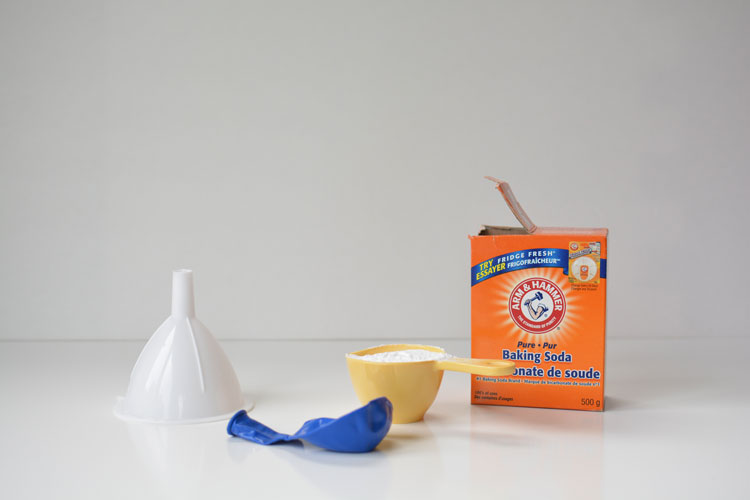
Stretch the opening of the balloon over the end of the funnel. Pour about 1/3 cup of baking soda into the funnel and shake it around a bit until it all falls through the funnel and into the balloon. Just make sure you hang onto the balloon opening so it doesn’t fall off the funnel.
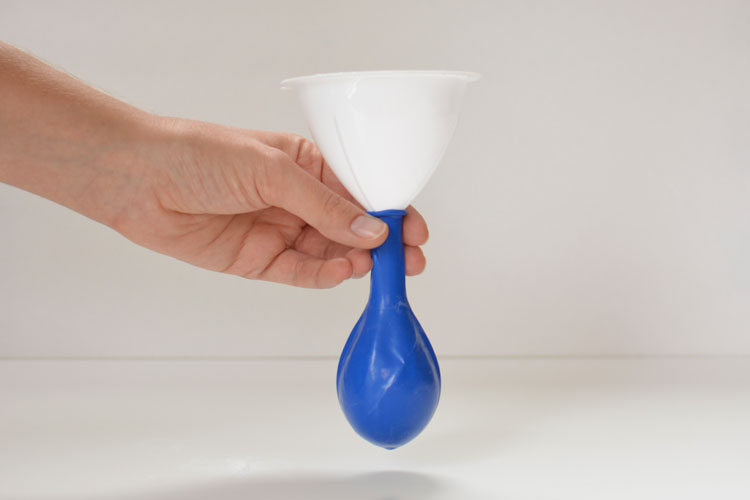
Rinse all the baking soda off the funnel (or you’ll get fizzing), and then use the funnel to pour the vinegar into a soda or water bottle. I didn’t measure the vinegar, but it was about 1/3 of the soda bottle full, or if you are using a smaller water bottle, fill it up half way. It was approximately 1 cup of vinegar.
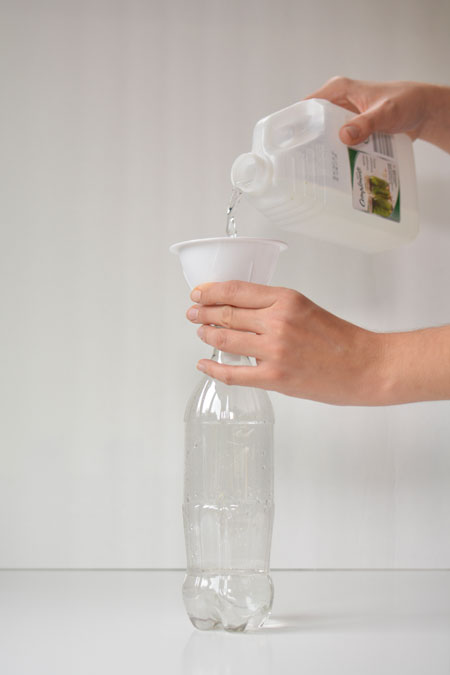
Gently stretch the opening of the balloon over the opening of the bottle. Make sure the balloon is draping down at the side to keep the baking soda from falling in.

Lift the balloon so that it is completely upright allowing all of the baking soda to fall into the vinegar.
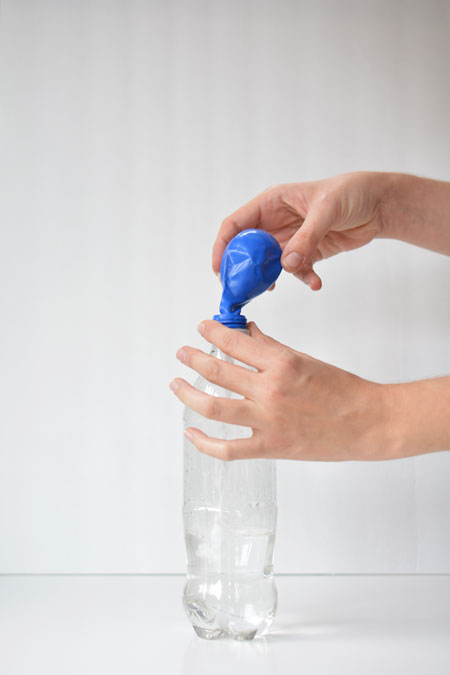
The balloon seemed to be on the bottle pretty snugly, but I’d still recommend pinching it onto the bottle opening the whole time. The last thing you want is for it to pop off!
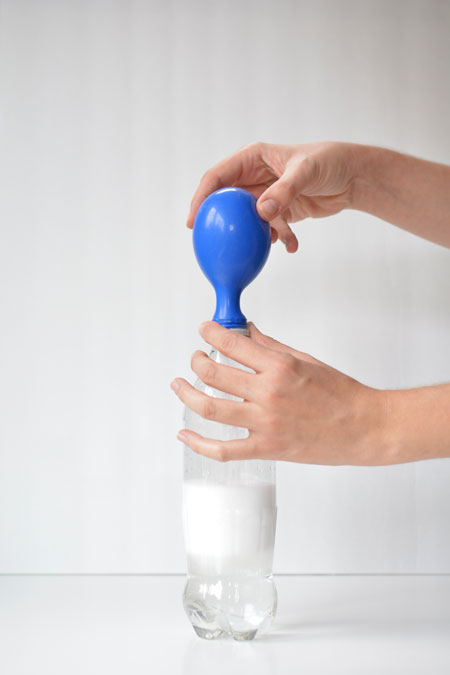
As soon as the chemical reaction began, the balloon started to inflate! The more vinegar and baking soda you use, the bigger your balloon will get!
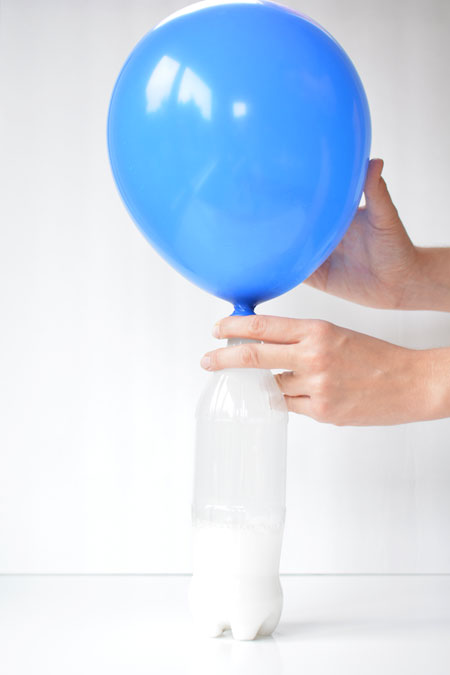
Here’s an animation of how it inflated. It was quick and easy!
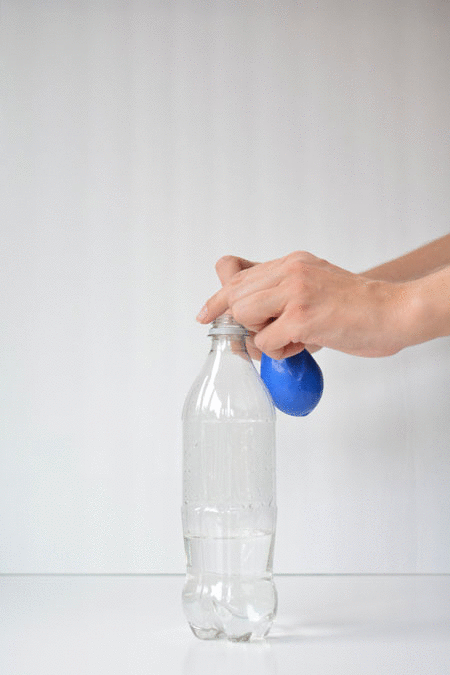
My girls had a blast inflating these balloons! They aren’t strong enough to blow up balloons with their own lungs yet, so they thought it was pretty neat that they could inflate them another way!

My five year old’s balloon was the biggest one we made. Both of their little hands were too small to hold the balloons up from the bottom, so they had to hold the tops to keep them from falling over.
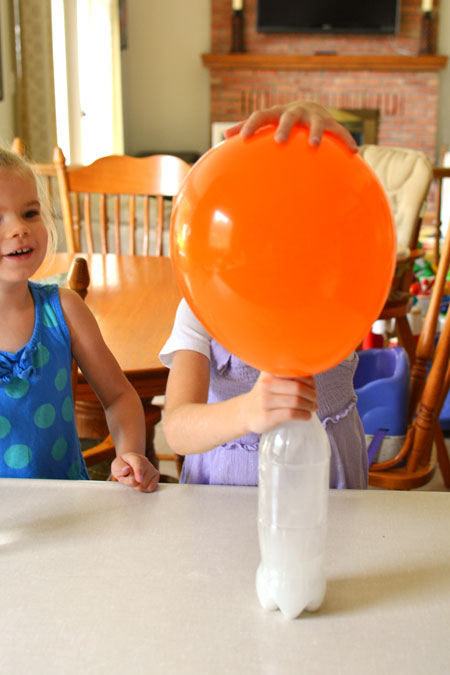
It was kind of cool, because all of the bubbles and foam rose up to the top of the bottle and half way up the balloon! The girls said it looked like the inside of the balloon was getting a bath, and it really did. It was like it was raining on the inside of the balloon.
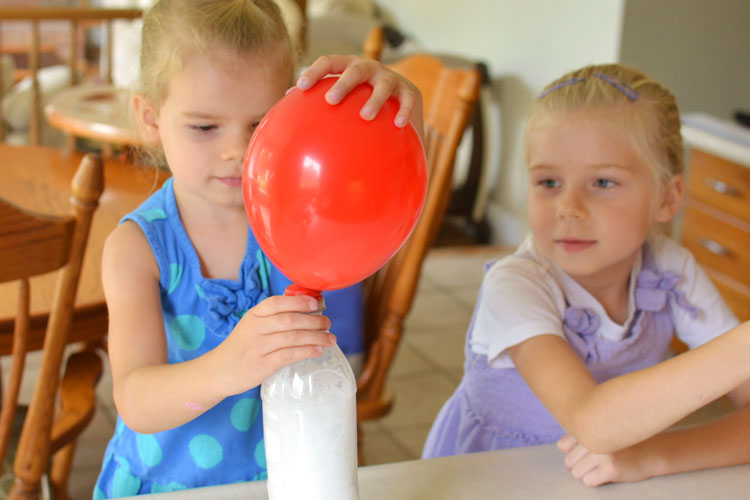
We used 12″ balloons, but you can experiment with different balloon sizes. And you can also experiment with the quantities of vinegar and baking soda that you use. There’s really no need to measure, but you can try it with bigger amounts, to create more carbon dioxide gas, and therefore make the balloons grow to be even bigger! Just make sure you increase it a little at a time, or you’ll have a baking soda and vinegar volcano flying across your kitchen!
Baking Soda and Vinegar Balloons
Materials
- 1 empty water bottle
- 1 balloon
- 1 funnel
- 1/3 cup baking soda
- 1 cup vinegar
Instructions
- Stretch the opening of the balloon over the end of the funnel. Pour about 1/3 cup of baking soda into the funnel and shake it around a bit until it all falls through the funnel and into the balloon.
- Rinse all the baking soda off the funnel, and then use the funnel to pour the vinegar into a water bottle.
- Gently stretch the opening of the balloon over the opening of the bottle. Make sure the balloon is draping down at the side to keep the baking soda from falling in.
- Lift the balloon so that it is completely upright allowing all of the baking soda to fall into the vinegar.
- Watch the magic as your balloon begins to inflate!
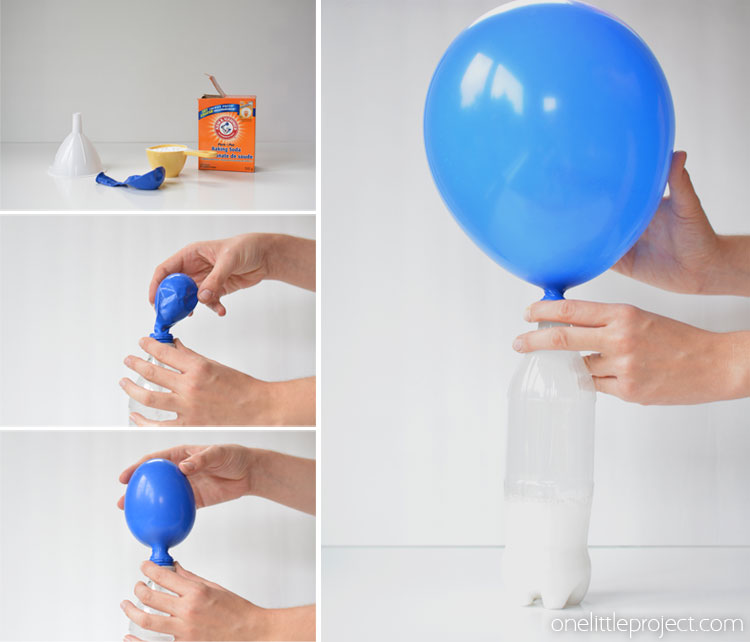
These baking soda and vinegar balloons were a really simple experiment! We used household ingredients that we already had so it was super easy to put together. Both my 3 year old and 5 year old were able to do most of it all by themselves, which is always pretty awesome!
Here are even more fun experiments to try!
How to Make Slime without Borax
Source : onelittleproject.com
Read more...
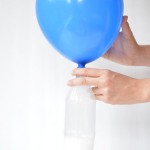
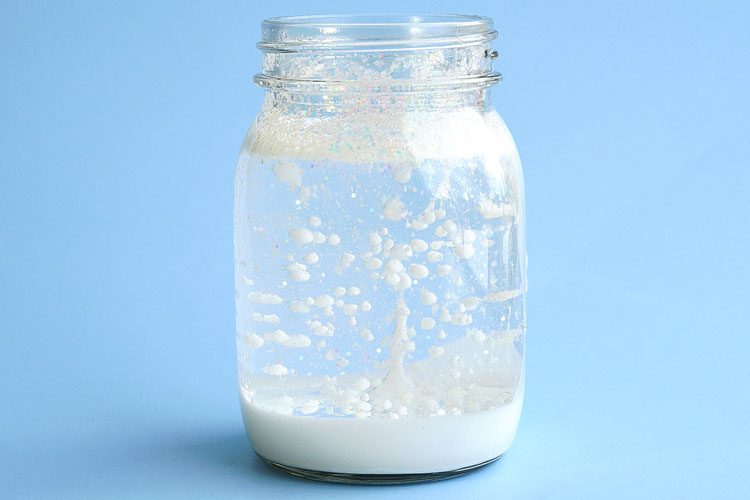
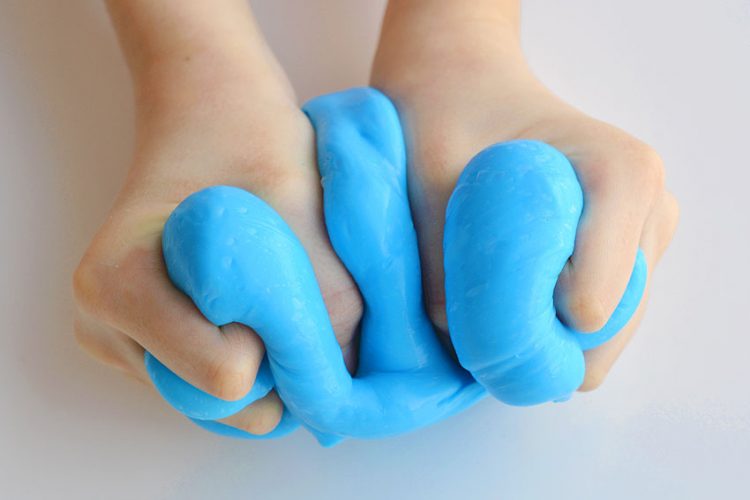


Post a Comment
Post a Comment